BFG Tech GeForce 8800 GT OC 512MB
BFG Tech GeForce 8800 GT OC 512MB:
Manufacturer:BFG Tech
UK Price (as reviewed):£181.98 (inc. VAT)
US Price (as reviewed):$279.99 (ex. Tax)
Core Clock: 625MHz
Shader Clock: 1566MHz
Memory Clock: 1800Mhz (effective)
Warranty: Ten years (Europe), Lifetime (North America)
Just two weeks ago, Nvidia launched the GeForce 8800 GT and we found that it was the best bang-for-buck graphics card currently available, and probably one of the best-value graphics cards ever released. There’s oodles of performance on tap at a price point that is affordable for many and it really drove great DirectX 10 performance down to a mainstream price point.
Something we’ve said quite a bit these past few weeks is how great this year’s line up of PC games is – it’s as if PC gaming hasn’t been in a better state than it is now. I could list all the great games coming out (or that have come out already) this year, but it’d probably depress me, as I’d realise that I don’t have the time to play all the ones I want to (maybe there will be time in the Spring?). It’s a sad time for me, but even despite that, there is no point in me denying that it is a fantastic time to be a PC gamer.
The GeForce 8800 GT’s launch really pushed the fact that PC gaming is in great shape right smack bang in front of us and there’s more to follow in the very near future too, as AMD is set to shake up its own graphics card range up. Before we get to that though, we’re going to have a look at the first GeForce 8800 GT partner card that arrived in our offices – BFG Tech’s GeForce 8800 GT OC.
Click to enlarge
We’re going to find out how it performs compared to the reference card, as it comes with a mild overclock. Additionally, we’ll also look at how well you can expect a typical GeForce 8800 GT to react to a bit of overclocking, as we didn’t overclock the reference cards we received from Nvidia.
Box and Bundle:
Since the last BFG Tech card we reviewed, the company has changed its box design. It almost seems apt to say again, as the company redesigned some of its boxes back when the GeForce 8800-series launched in November last year, however this change appears to be for the good – let’s hope it doesn’t change again in the near future, as I quite like this one.
It almost seems apt to say again, as the company redesigned some of its boxes back when the GeForce 8800-series launched in November last year, however this change appears to be for the good – let’s hope it doesn’t change again in the near future, as I quite like this one.
The front of the box explains exactly what it is and there’s also a handy little diagram that explains what the enclosed graphics card can do. BFG Tech says that the GeForce 8800 GT is great for general computing and HD video, while being pretty good for gaming. Obviously, if it was a GeForce 8800 GTX, or whatever Nvidia’s next-generation high-end card might be called, you’d expect the card to score highly in all three categories.
Down along the bottom edge there’s another scale, which goes from good to better to best, and indicates that this card fits into the “best” category. We’d assume something like an 8600 GT would fit in to the “better” category, but it depends what you’re saying it’s better than.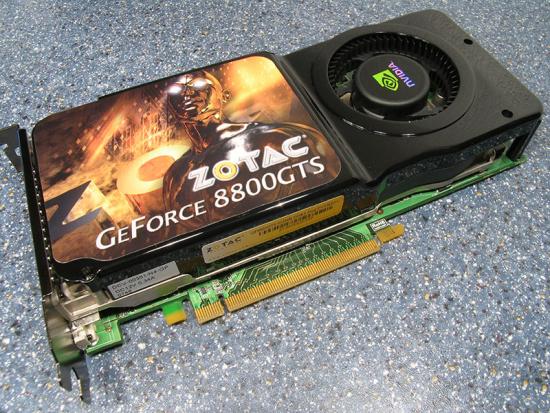 From looking at the scale, one can only imagine that the standard of measurement is Intel integrated graphics which, as many of you know, is about as rough as it gets at the moment.
From looking at the scale, one can only imagine that the standard of measurement is Intel integrated graphics which, as many of you know, is about as rough as it gets at the moment.
Click to enlarge
The back of the box explains these scales in a bit more detail and there’s even a nifty section that talks about the recommended monitor size. I’m not sure I’d agree that the GeForce 8800 GT is great for gaming on a 30” monitor, but I guess the card supports that resolution and you can run some older games at its native resolution. I wouldn’t recommend that for games going forwards, unless you’re going to have fun playing Crysis on medium detail at 2560×1600 on a single GeForce 8800 GT.
The bundle isn’t the best we’ve seen, as there are no games included, however what is included is useful. Despite there being two DVI ports on the back of the card, there’s only one DVI-to-VGA converter included in the box – this is a little disappointing but, since digital monitors are becoming more and more prevalent these days, I guess it’s the expected practice.
Additionally, there’s an component-out dongle which connects to the card’s HDTV-out connector and a 2×4-pin Molex to 6-pin PCI-Express cable for those of you that don’t have at least one 6-pin PCI-Express connector on your power supply. Although the GeForce 8800 GT is a PCI-Express 2.0 card, it still only draws 75W of its maximum 105W board power through the PCI-Express interconnect in order to maintain backwards compatibility with existing motherboards.
To finish the bundle off, BFGTech has included a couple of case stickers (although, disappointingly there’s no OMGWTFBFGSAUCE! sticker) along with a driver CD and a quick install guide. This is all fairly typical of previous BFG Tech bundles we’ve come across. Let’s have a look at the card…
1 — BFG Tech GeForce 8800 GT OC 512MB2 — The Card and Warranty3 — Test Setup4 — World in Conflict5 — BioShock6 — Enemy Territory: Quake Wars7 — Company of Heroes8 — Lost Planet: Extreme Condition9 — Overclocking & Final Thoughts
Inno3D GeForce 8800 GT OC review
There is a single good reason why many GeForce 8800 GTS owners are trying to flog off their graphics cards and that is the arrival of the GeForce 8800 GT.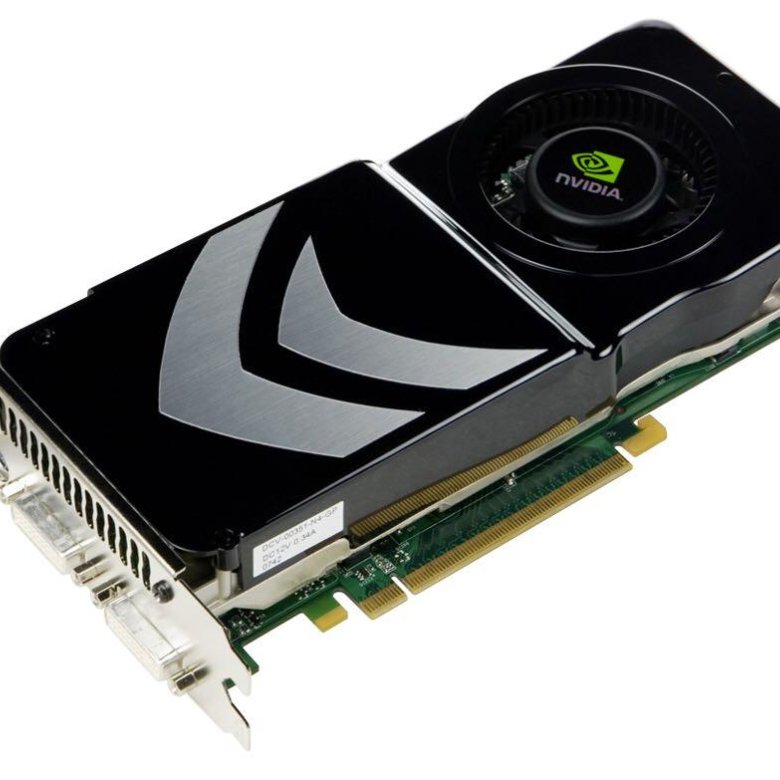
The new 8800 GT is not only considerably faster than the 8800 GTS, but amazingly it is also much cheaper. Many readers have asked why this is and how Nvidia can just release a graphics card that eliminates most of its high-end line up! It is pretty simple really. The GeForce 8800 GTX was released a year ago now and is very much at the end of its lifespan.
This also happens to coincide with an upcoming release from main competitor AMD/ATI, who will unleash their next-gen cards as soon as next week, and no doubt Nvidia will quickly follow suit. Furthermore being so late in the game, it is unlikely that gamers are still throwing themselves at GeForce 8800 GTX and GTS graphics cards, with many holding out for what is to come.
Considering that Nvidia did telly up a bill of around $400 million dollars developing the GeForce 8800 architecture, it is only natural that they want to juice the investment for all it’s worth.
So how do you make an end of life product look like new again and more importantly how do you make it sell like hot cakes? Well you would do exactly what Nvidia has done with the GeForce 8800 GT: make it nearly as fast as your high-end product and sell it at half the price! For those holding out to see what the next generation ATI graphics cards are going to be like, you may as well find the 8800 GT too hard to resist and I am sure this is exactly what Nvidia is banking on, stealing a little thunder from whatever AMD has got to show us soon.
The GeForce 8800 GT was officially launched on October 29th and was made available on retail immediately. Today just two weeks later, the card is supposed to be everywhere but it’s been extremely hard to keep up with the demand for the card. Nvidia announced that the suggested retail price for the GeForce 8800 GT would be $200 for the 256MB version and around $250 for the 512MB version. Currently the average 512MB 8800 GT graphics card costs between $270-$290, slightly above the MSRP, which is not that unusual for a product that has only just recently been released.
At this point we must recommend you to wait just for a week or two until availability increases and the pricing of these 8800 GT graphics cards levels off. This should also give time to see how the new ATI cards perform. But we can understand the feeling, the «Crysis effect» is everywhere and we just want to run the damn game with all those wacky visual effects set to ‘high’.
In the meantime, there is a number of interesting GeForce 8800 GT offerings that you should check out before settling for any brand, such is the case of the the Inno3D 8800 GT that we have here today.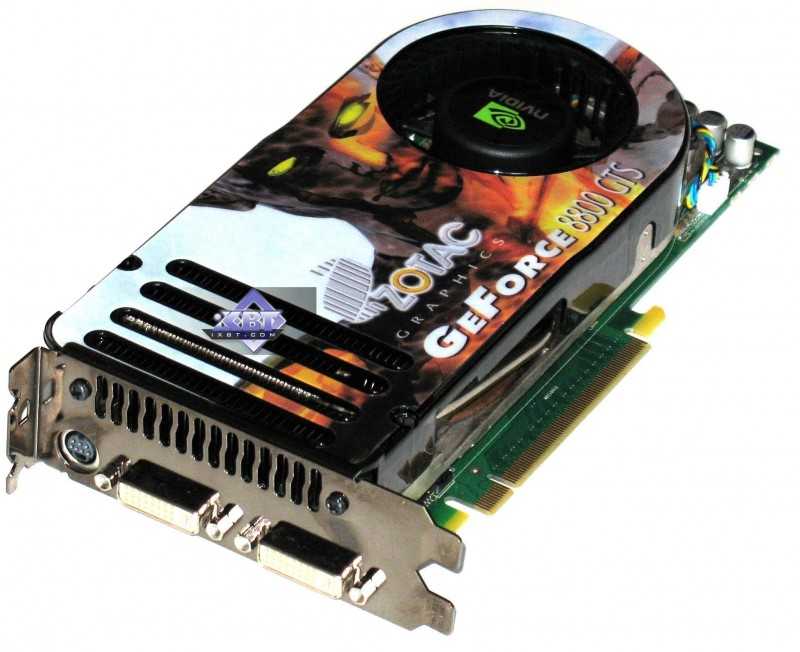 While this particular Inno3D product still makes use of the Nvidia reference cooler and a green PCB, it comes overclocked out of the box for optimum performance under warranty.
While this particular Inno3D product still makes use of the Nvidia reference cooler and a green PCB, it comes overclocked out of the box for optimum performance under warranty.
Nvidia Geforce 8800 GTS 512MB (G92)
Again 128 stronger California shooters, but with cut spears (512MB and 256bit)
Part 1: Theory and architecture GT, based on the G92 chip, we mentioned that this solution uses a chip in which not all ALU and TMU execution units are unlocked, some of them are waiting in the wings to be included in a video card of a different price level. And now this moment has come, Nvidia has announced an updated version of the Geforce 8800 GTS, which has the same name as the younger solution based on the G80. The easiest way to distinguish it is by the amount of installed video memory, it is equal to 512 megabytes, unlike the previous 320 MB and 640 MB options. So this model was named Geforce 8800 GTS 512MB.
The new version of the Geforce 8800 GTS is based on the G92 chip, already used in the GeForce 8800 GT, a video card of the so-called upper middle price level, so we already know the main features and characteristics.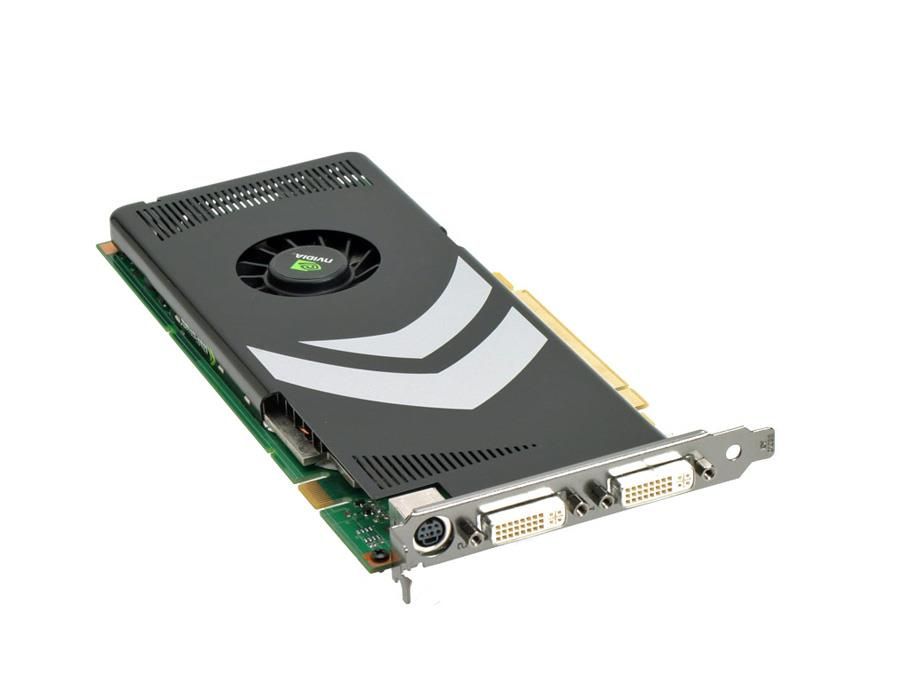 Unlike the two Geforce 8800 GT models with a recommended price of $200 to $250 (which doesn’t compare well with real prices, by the way), the new solution has a manufacturer’s recommended price of $349-399. The peculiarities of the used video chip is the support of only a 256-bit memory bus, but a greater number of unlocked universal execution units. Let’s take a closer look at Nvidia’s new low-end high-end solution…
Unlike the two Geforce 8800 GT models with a recommended price of $200 to $250 (which doesn’t compare well with real prices, by the way), the new solution has a manufacturer’s recommended price of $349-399. The peculiarities of the used video chip is the support of only a 256-bit memory bus, but a greater number of unlocked universal execution units. Let’s take a closer look at Nvidia’s new low-end high-end solution…
Before reading this material, we recommend that you carefully read the basic theoretical materials DX Current, DX Next and Longhorn, which describe various aspects of modern hardware graphics accelerators and the architectural features of Nvidia and AMD products.
- [06/06/05] Longhorn accelerators and shaders for DirectX 10
- [03/01/05] DirectX.Update 3D graphics accelerators: half a step forward
- [04/09/04] DX.Next: the near and near future of hardware 3D graphics acceleration
These materials quite accurately predicted the current situation with video chip architectures, many assumptions about future solutions came true.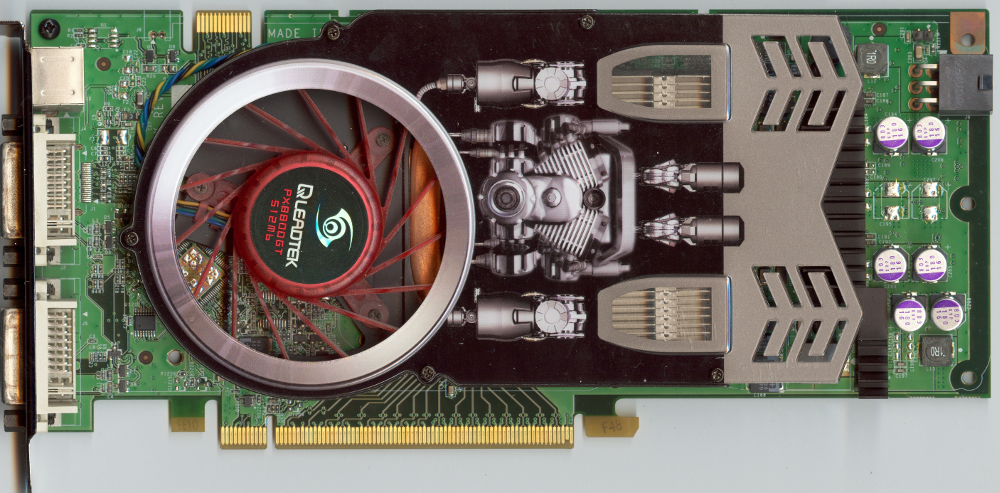 Detailed information about the unified architecture of Nvidia G8x/G9x on the example of previous chips can be found in the following articles: 8600 GTS (G84) 32 California shooters in action
Detailed information about the unified architecture of Nvidia G8x/G9x on the example of previous chips can be found in the following articles: 8600 GTS (G84) 32 California shooters in action
As we mentioned in the previous article, the G92 chip includes all the advantages of the G8x: a unified shader architecture, full support for DirectX 10, high-quality anisotropic filtering methods and a CSAA anti-aliasing algorithm with up to sixteen samples inclusive. Some chip blocks are slightly different from those in the G80, but the main change compared to the G80 is the 65nm manufacturing technology, which has reduced the cost of production. Consider the characteristics of the GPU and new video solutions based on it:
Geforce 8800 GTS 512MB graphics accelerator
- Chip code name G92
- 65 nm technology
- 754 million transistors (more than G80)
- data types
- Hardware support for DirectX 10, including shader model Shader Model 4.
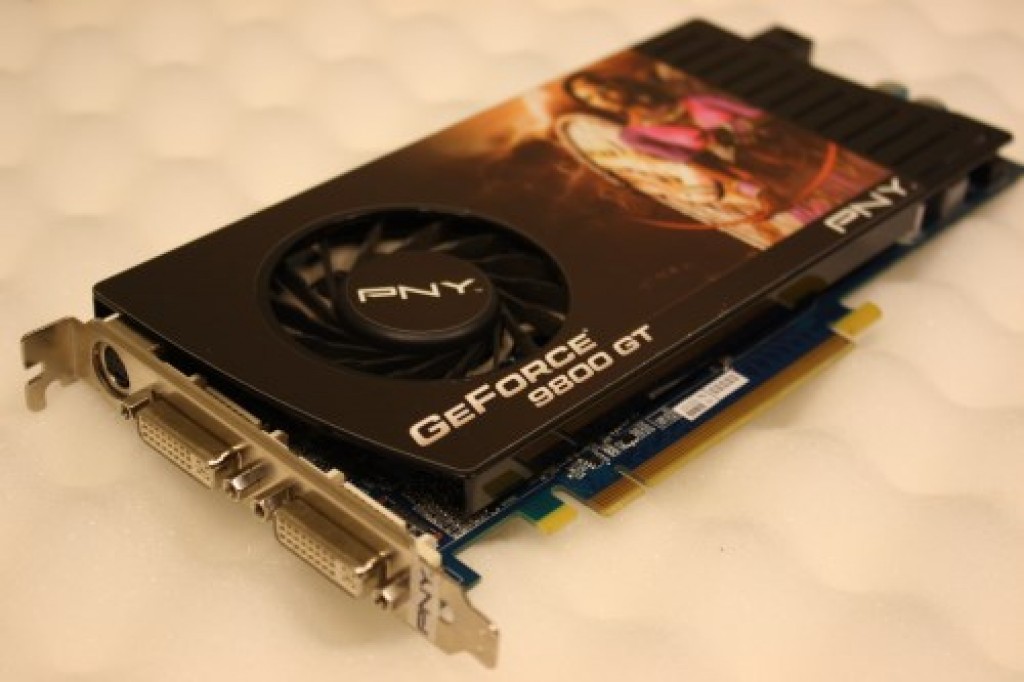 0, geometry generation and recording intermediate data from shaders (stream output)
0, geometry generation and recording intermediate data from shaders (stream output) - 256-bit memory bus, four independent 64-bit wide controllers
- 650 MHz core clock (Geforce 8800 GTS 512MB)
- ALUs run at more than double the frequency (1.625 GHz for Geforce 8800 GTS 512MB)
- 64 texture address units with support for FP16 and FP32 components in textures
- 64 bilinear filtering units (as in G84 and G86, no free trilinear filtering and more efficient anisotropic filtering)
- Possibility of dynamic branching in pixel and vertex shaders
- 4 wide ROP units (16 pixels) with support for anti-aliasing modes up to 16 samples per pixel, including with FP16 or FP32 framebuffer format. Each block consists of an array of flexibly configurable ALUs and is responsible for generating and comparing Z, MSAA, blending.
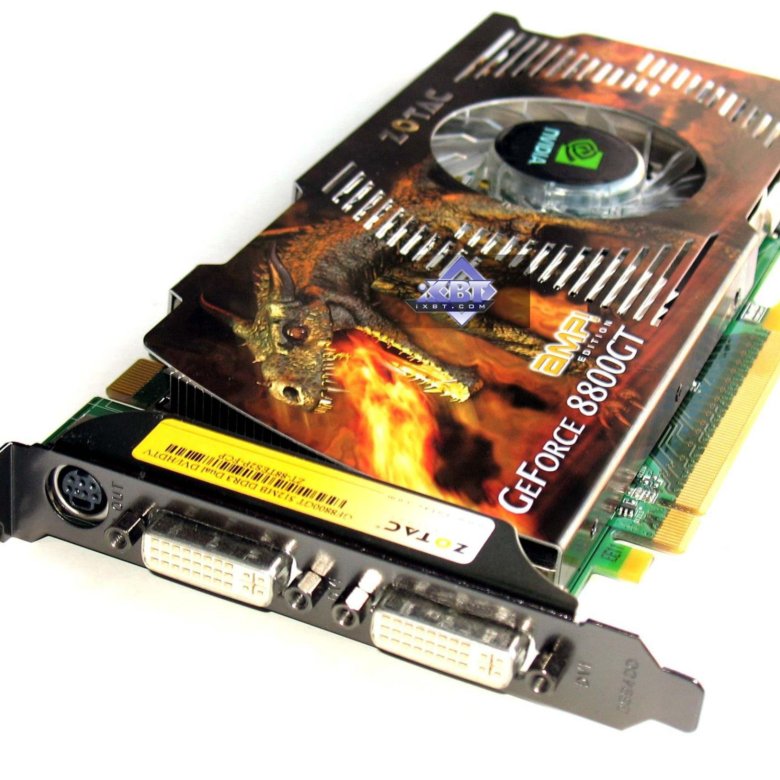 Peak performance of the entire subsystem up to 64 MSAA samples (+ 64 Z) per clock, in colorless mode (Z only) 128 samples per clock
Peak performance of the entire subsystem up to 64 MSAA samples (+ 64 Z) per clock, in colorless mode (Z only) 128 samples per clock - Recording results up to 8 frame buffers simultaneously (MRT)
- All interfaces (two RAMDAC, two Dual DVI, HDMI, HDTV) are integrated on the chip (in contrast to those placed on an additional external NVIO chip in Geforce 8800)
92013 scalar ALUs floating point (integer and floating point formats, FP support for 32-bit IEEE 754 precision, MAD+MUL without clock loss)
Reference specifications Geforce 8800 GTS 512MB cards
- Core frequency 650 MHz
- Universal processor frequency 1625 MHz
- Number of universal processors 128
- Number of texture units 64, blending units 16
- Effective memory frequency 1.94 GHz (2*970 MHz)
- Memory type GDDR3
- Memory capacity 512 megabytes
- Memory bandwidth 64.0 gigabytes per second.
- Theoretical maximum fill rate 10.4 gigapixels per second.
- Theoretical texture sampling rate up to 41.6 gigatexels per second.
- Two DVI-I Dual Link connectors, supports up to 2560×1600 output
- SLI connector
- PCI Express 2.
 0 bus
0 bus - TV-Out, HDTV-Out, HDCP support
- Recommended price $349-399
As you can see from the specifications, the new Geforce 8800 GTS 512MB version is quite different from the old ones. The number of execution units has increased: ALU and TMU, the GPU frequency has also increased significantly, including the frequency of shader units. Despite the truncated memory bus (256-bit versus 320-bit for older versions), the memory bandwidth remained the same, since its operating frequency was raised to the appropriate value. As a result, the new GTS has significantly improved shader execution power as well as increased texture fetching speed. At the same time, the fill rate and memory bandwidth remained the same.
Due to the changed width of the memory bus, the size of the latter can no longer be equal to 320 MB or 640 MB, only 256 MB, 512 MB or 1 GB. The first value is too small, it will be clearly not enough for a card of this class, and the last is too high, a slight increase in performance is unlikely to justify the increased price of such options (which may well appear in the future). Therefore, Nvidia chose the middle option with a bundle of cards with a capacity of 512 MB. Which, as our recent study showed, is the golden mean for all modern games that are very demanding on the amount of video memory and use up to 500-600 megabytes. We do not get tired of repeating that this does not mean that all game resources must be located only in the local memory of the video card, resource management can be given to API control, especially in Direct3D 10 with video memory virtualization.
Therefore, Nvidia chose the middle option with a bundle of cards with a capacity of 512 MB. Which, as our recent study showed, is the golden mean for all modern games that are very demanding on the amount of video memory and use up to 500-600 megabytes. We do not get tired of repeating that this does not mean that all game resources must be located only in the local memory of the video card, resource management can be given to API control, especially in Direct3D 10 with video memory virtualization.
Architecture
As was written in the previous article on the GeForce 8800 GT, we can say that the G92 is the previous G80 flagship, transferred to the new process technology, but with some changes. The new chip has 8 large shader units and 64 texture units, as well as four wide ROPs. Despite all the changes for the better, the number of transistors in the chip seems to be too large, probably, the increased complexity of the chip is due to the inclusion of a previously separate NVIO chip, as well as a new generation video processor.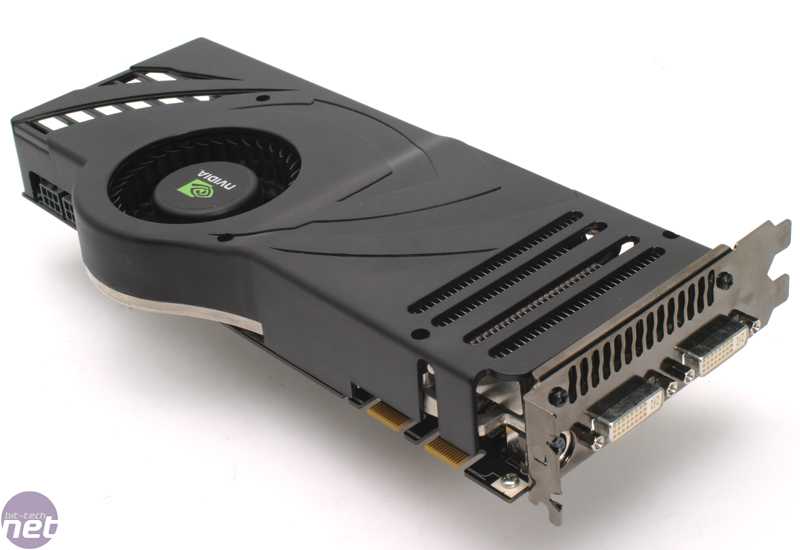 In addition, the number of transistors has been affected by more complex TMUs, and there is a possibility of increasing caches to provide more efficient 256-bit memory bus.
In addition, the number of transistors has been affected by more complex TMUs, and there is a possibility of increasing caches to provide more efficient 256-bit memory bus.
There are very few architectural changes in the G92 chip, we talked about all of them in the previous article, and we won’t do it again. Everything said in the reviews of previous solutions remains valid, we will only give the main diagram of the G92 chip, now with all 128 universal processors:
which is written in our previous article. Let’s once again dwell on the fact that 64 texture units in GeForce 8800 GTS 512MB in real applications in most cases will NOT be stronger than 32 units in GeForce 8800 GTX. With trilinear and/or anisotropic filtering enabled, their performance will be approximately the same, since they have the same number of texture data filtering units. Of course, where unfiltered samples are used, the performance of solutions on G92 will be higher.
PureVideo HD
One of the expected changes in the G92 is the second-generation integrated video processor known from the G84 and G86, which received enhanced support for PureVideo HD.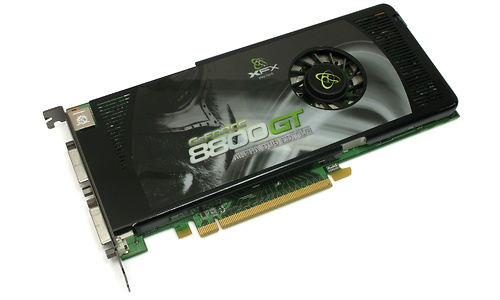 This version of the video processor almost completely offloads the CPU when decoding all types of video data, including the «heavy» H.264 and VC-1 formats. The G92 uses a new model of programmable PureVideo HD video processor, including the so-called BSP engine. The new processor supports decoding H.264, VC-1 and MPEG-2 formats with resolutions up to 1920×1080 and bitrates up to 30-40 Mbps, doing the work of decoding CABAC and CAVLC data in hardware, which allows you to play all existing HD-DVD and Blu-ray discs even on average single-core PCs. VC-1 decoding is not as efficient as H.264, but it is still supported by the new processor. You can read more about the second generation video processor in our G84/G86 and G92 reviews, links to which are given at the beginning of the article.
This version of the video processor almost completely offloads the CPU when decoding all types of video data, including the «heavy» H.264 and VC-1 formats. The G92 uses a new model of programmable PureVideo HD video processor, including the so-called BSP engine. The new processor supports decoding H.264, VC-1 and MPEG-2 formats with resolutions up to 1920×1080 and bitrates up to 30-40 Mbps, doing the work of decoding CABAC and CAVLC data in hardware, which allows you to play all existing HD-DVD and Blu-ray discs even on average single-core PCs. VC-1 decoding is not as efficient as H.264, but it is still supported by the new processor. You can read more about the second generation video processor in our G84/G86 and G92 reviews, links to which are given at the beginning of the article.
PCI Express 2.0
Of the real innovations in the G92, support for the PCI Express 2.0 bus can be highlighted. The second version of PCI Express doubles the standard bandwidth from 2.5 Gb/s to 5 Gb/s, resulting in x16 slots capable of transferring data at up to 8 Gb/s in each direction, as opposed to 4 Gb/s for version 1. x. At the same time, it is very important that PCI Express 2.0 is compatible with PCI Express 1.1, and old video cards will work in new motherboards, and new video cards with support for the second version will remain operational in boards without support. Provided that the external power supply is sufficient and without increasing the interface bandwidth, of course.
x. At the same time, it is very important that PCI Express 2.0 is compatible with PCI Express 1.1, and old video cards will work in new motherboards, and new video cards with support for the second version will remain operational in boards without support. Provided that the external power supply is sufficient and without increasing the interface bandwidth, of course.
The main competitor of Nvidia has assessed the real impact of the higher bandwidth of the PCI Express bus on performance in their materials. According to them, a mid-range graphics card with 256 MB of local memory accelerates by about 10% when moving from PCI Express 1.0 to 2.0 in modern games such as Company of Heroes, Call of Juarez, Lost Planet and World In Conflict, the indicators change from 5 % up to 25% for different games and testing conditions. Naturally, speech at high resolutions, when the frame buffer and related buffers occupy most of the local video memory, and some resources are stored in the system.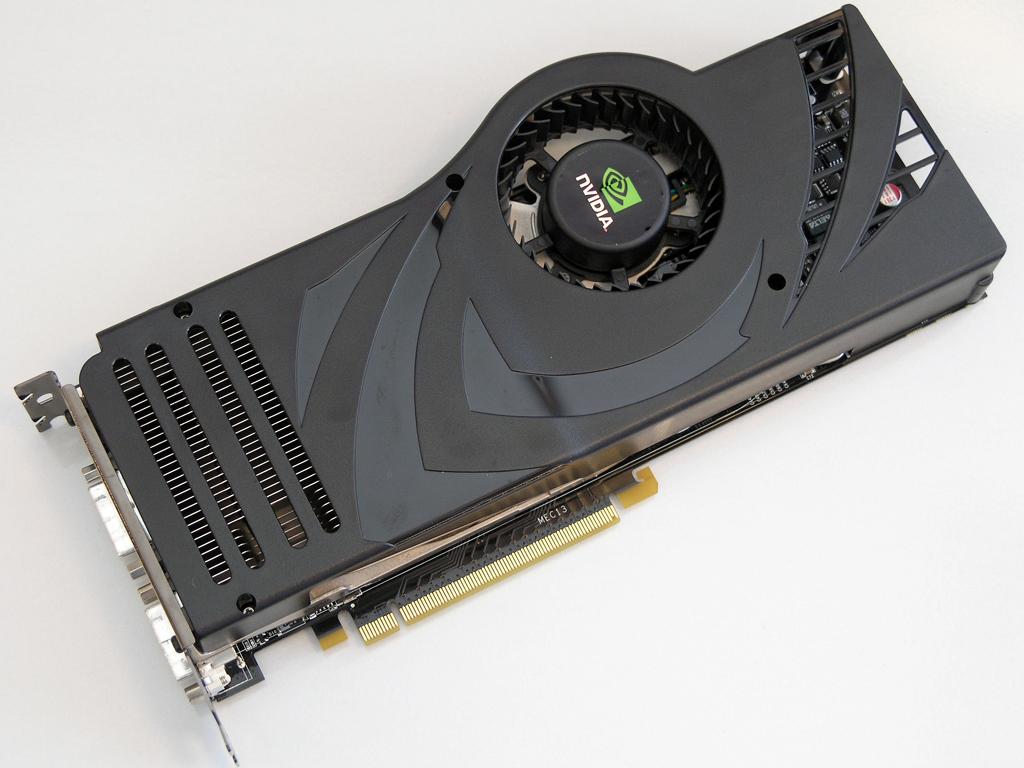
To ensure backward compatibility with existing PCI Express 1.0 and 1.1 solutions, the 2.0 specification supports both 2.5 Gb/s and 5 Gb/s transfer rates. PCI Express 2.0 backwards compatibility allows legacy 2.5 Gb/s solutions in 5.0 Gb/s slots to run at slower speeds, while a device designed to 2.0 specifications can support both 2.5 Gb/s and 5 Gb/s speeds . In theory, compatibility is good, but in practice, some combinations of motherboards and expansion cards may cause problems.
Support for external interfaces
Everything here is the same as in the GeForce 8800 GT, there are no differences. The additional NVIO chip available on the GeForce 8800 boards, which supports external interfaces placed outside the main one (two 400 MHz RAMDAC, two Dual Link DVI (or LVDS), HDTV-Out), in this case was included in the chip itself, support for all these interfaces built into the G92 itself.
Geforce 8800 GTS 512MB video cards usually have two Dual Link DVI outputs with HDCP support. As for HDMI, support for this connector has been implemented, it can be implemented by manufacturers on cards of a special design. Although the presence of an HDMI connector on a video card is completely optional, it will be successfully replaced by an adapter from DVI to HDMI, which is included with most modern video cards.
As for HDMI, support for this connector has been implemented, it can be implemented by manufacturers on cards of a special design. Although the presence of an HDMI connector on a video card is completely optional, it will be successfully replaced by an adapter from DVI to HDMI, which is included with most modern video cards.
The next part is the practical part of the study, devoted to how well the new Nvidia solution performs in synthetic tests.
NVIDIA GeForce 8800 GTS 512MB (G92) — Part 2: Videos and Synthetic tests
December 11, 2007
Alexey Beryllo
Andrey Vorobyov
News 9000
February 2, 2023
Double the memory of the RTX 4090 and more CUDA cores. Nvidia RTX 6000 (Ada Generation) first tested in benchmark
February 2, 2023
Intel Arc A750 graphics card will now be the best in its segment? The company reduced the price and increased the performance with the new driver up to 77%
February 1, 2023
Newsroom >
Desktop | GEFORCE-GTX.
 com
com
NVIDIA GeForce GTX graphics cards for personal computers.
List of all NVIDIA GeForce graphics cards for PC. Detailed specifications, drivers for TITAN, GeForce 10, GeForce 900, GeForce 800, GeForce 700, GeForce 600, GeForce 500 series
All NVIDIA graphics cards for personal computer
NVIDIA Desktop Graphics Series
GeForce RTX 2060
GPU Architecture: Turing
Boost Clock: 1365 MHz
Memory: 6 GB GDDR6 192-bit
RTX-OPS: 37T
DETAILS
GeForce RTX 2070
GPU Architecture: Turing
Boost Clock: 1410 MHz
Memory: 8 GB GDDR6 256-bit
RTX-OPS: 45T
DETAILS
GeForce RTX 2080 Ti
GPU Architecture: Turing
Boost Clock: 1350 MHz
Memory: 11 GB GDDR6 352-bit
RTX-OPS: 78T
DETAILS
GeForce RTX 2080
GPU Architecture: Turing
Boost Clock: 1515 MHz
Memory: 8 GB GDDR6 256-bit
RTX-OPS: 60T
DETAILS
GeForce 450
GPU Architecture: Fermi
Boost Clock: 783 MHz
Memory: 1 GB GDDR5 128-bit
DETAILS
GeForce GT 745
GPU Architecture: Kepler
Boost Clock: 1033 MHz
Memory: 2 GB DDR3 128-bit
DETAILS
GeForce GT 740
GPU architecture: Kepler
Boost Clock: 993 MHz
Memory: 1 GB GDDR5 128-bit
DETAILS
NVIDIA Desktop Series Performance Chart
| Video card | CUDA Core | Frequency Base / Boost |
Memory Capacity / Type / Tire |
GPU Model |
| 2304 | MHz | TBC | GA107-300 (GA107) | |
| 3584 | 1320 / 1777 MHz | 12 Gb GDDR6 192-bit |
GA106-300 (GA106) | |
| 8704 | 1440 / 1710 MHz | 10 Gb GDDR6X 320-bit |
GA102-200 (GA102) | |
| 3584 | MHz | TBC | GA106-300 (GA106) | |
| 4864 | 1410 / 1665 MHz | 8 Gb GDDR6 256-bit |
GA104-200 (GA104) | |
| 5888 | 1500 / 1725 MHz | 8 Gb GDDR6 256-bit |
GA104-300 (GA104) | |
| 10240 | MHz | TBC | GA102-250 (GA102) | |
| 10496 | 1395 / 1695 MHz | 24 Gb GDDR6X 384-bit |
GA102-300 (GA102) | |
| 1408 | 1530 / 1785 MHz | 6 Gb GDDR6 192-bit |
TU116-300-A1 (TU116) | |
| 1280 | 1530 / 1725 MHz | 4 Gb GDDR5 128-bit |
TU117-300 (TU117) | |
| 3072 | 1650 / 1815 MHz | 8 Gb GDDR6 256-bit |
TU104-450 (TU104) | |
| 2560 | 1605 / 1770 MHz | 8 Gb GDDR6 256-bit |
TU104-410 (TU104) | |
| 2176 | 1470 / 1650 MHz | 8 Gb GDDR6 256-bit |
TU104-410 (TU104) | |
| 896 | 1485 / 1665 MHz | 4 Gb GDDR5 128-bit |
TU117-300 (TU117) | |
| 1408 | 1530 / 1785 MHz | 6 Gb GDDR5 192-bit |
TU116-300 (TU116) | |
| 1536 | 1500 / 1770 MHz | 6 Gb GDDR6 192-bit |
TU116-400 (TU116) | |
| 1920 | 1365 / 1680 MHz | 6 Gb GDDR6 192-bit |
TU106-300 (TU106) | |
| 4608 | 1350 / 1770 MHz | 24 Gb GDDR6 384-bit |
TU102-400 (TU102) | |
| 96 | 550 MHz | 1 Gb GDDR3 128-bit |
GT215-301 (GT215) | |
| 96 | 550 MHz | 512 Mb GDDR3 128-bit |
GT215-301 (GT215) | |
| 72 | 540 MHz | 1 Gb DDR2 64-bit |
GT215-301 (GT215) | |
| 48 | 475MHz | 0.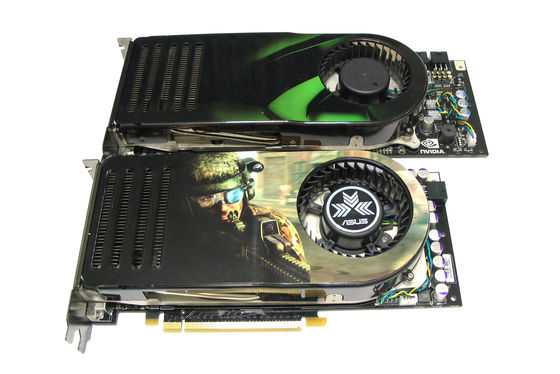 512 512Mb DDR3 64-bit |
GT216 | |
| 16 | 589MHz | 512 Mb DDR2 256-bit |
GT218-300 (GT218) | |
| 480 | 576 MHz | 1.75 Gb GDDR3 896-bit |
2x G200-400 (GT200B) | |
| 240 | 648MHz | 1 Gb GDDR3 512-bit |
G200-350 (GT200B) | |
| 240 | 602MHz | 1 Gb GDDR3 512-bit |
G200-302 (GT200) | |
| 2304 | 1410 / 1710 MHz | 8 Gb GDDR6 256-bit |
TU106-400A (TU106) | |
| 4352 | 1350 / 1545 MHz | 11 Gb GDDR6 352-bit |
TU102-300A (TU102) | |
| 240 | 633 / 1134 MHz | 896 Mb GDDR3 448-bit |
G200-105 (GT200B) | |
| 2944 | 1515 / 1710 MHz | 8 Gb GDDR6 256-bit |
TU104-400 (TU104) | |
| 576 MHz | 896 Mb GDDR3 448-bit |
G200-100 (GT200) | ||
| 128 | 702 MHz | 1 Gb GDDR3 256-bit |
G92-428 (G92B) | |
| 96 | 550 MHz | GDDR5, GDDR3, DDR3 128-bit | GT215-450 (GT215) | |
| 48 | 625 MHz | 1 Gb GDDR3 128-bit |
G94 | |
| 16 | 520MHz | 512 Mb DDR3 64-bit |
GT218-300 (GT218) | |
| 8 | 589MHz | 512 Mb DDR2 64-bit |
GT218-200 (GT218) | |
| 480 | 701MHz | 1.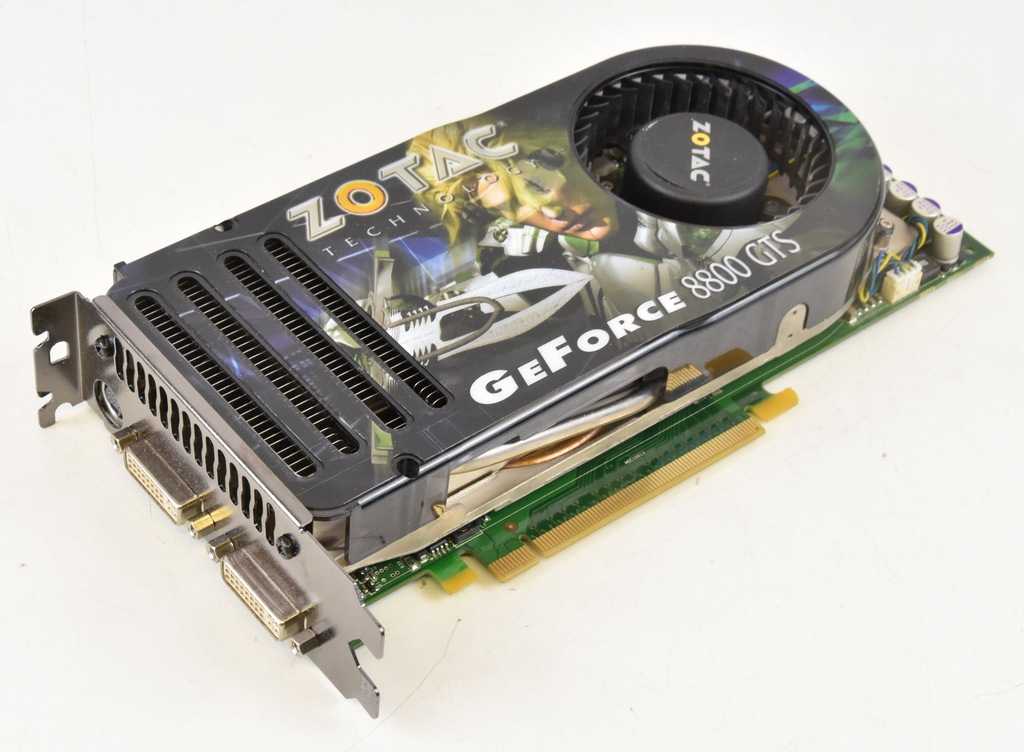 5 5Gb GDDR5 320-bit |
GF100-375 (GF100) | |
| 448 | 607 MHz | 1 Gb GDDR5 320-bit |
GF100-275 (GF100) | |
| 352 | 607 MHz | 1 Gb GDDR5 256-bit |
GF100-030 (GF100) | |
| 336 | 650MHz | 1 Gb GDDR5 256-bit |
GF104-225 (GF104) | |
| 336 | 675MHz | 1 Gb GDDR5 256-bit |
GF104-300 (GF104) | |
| 192 | 783 MHz | 1 Gb GDDR5 128-bit |
GF106-250 (GF106) | |
| 96 | 810MHz | DDR3, GDDR5 128-bit | GF108-400 (GF108) | |
| 96 | 700 MHz | 512 Mb DDR3 64-bit |
GF108-300 (GF108) | |
| 16 | 475MHz | 512 Mb DDR3 64-bit |
GT218 | |
| 128 | 612MHz | 768 Mb GDDR3 384-bit |
G80-450 (G80) | |
| 128 | 575MHz | 768 Mb GDDR3 384-bit |
G80-300 (G80) | |
| 96 | 513MHz | 320 Mb GDDR3 |
G80-100 (G80) | |
| 112 | 600MHz | 512 Mb GDDR3 256-bit |
G92-270 (G92) | |
| 32 | 675MHz | 256 Mb GDDR3 128-bit |
G84-400 (G84) | |
| 32 | 540 MHz | 512 Mb GDDR3 128-bit |
G84-303 (G84) | |
| 16 | 459 MHz | 256 Mb GDDR3 128-bit |
G86-300 (G86) | |
| 16 | 459 MHz | 256 Mb DDR2 64-bit |
G86-213 (G86) | |
| 8 | 459 MHz | 128 Mb DDR2 64-bit |
G86-771 (G86) | |
| 256 | 600MHz | 1 Gb GDDR3 512-bit |
2× G92-450 (G92) | |
| 128 | 738MHz | 512 Mb GDDR3 256-bit |
G92-420 (G92B) | |
| 128 | 675MHz | 512 Mb GDDR3 256-bit |
G92-420 (G92) | |
| 112 | 600MHz | 512 Mb GDDR3 256-bit |
G92-270 (G92) | |
| 64 | 650MHz | 512 Mb GDDR3 256-bit |
G94-300 (G94) | |
| 48 | 650MHz | 512 Mb GDDR3 256-bit |
G94-210 (G94) | |
| 96 | 550 MHz | 384 Mb GDDR3 192-bit |
G92-150 (G92) | |
| 32 | 550 MHz | DDR2 or GDDR3 128-bit | G96-650 (G96C) | |
| 16 | 550 MHz | 512 Mb GDDR3 128-bit |
G96-650 (G96C) | |
| 8 | 540 MHz | 256 Mb DDR2 64-bit |
G98-700 (G98) | |
| 8 | 567MHz | 512 Mb DDR2 64-bit |
G98-700 (G98) | |
| 8 | 540 MHz | 256 Mb DDR2 64-bit |
G98-700 (G98) | |
| 1024 | 607 MHz | 3 Gb GDDR5 768-bit |
2x GF110-375 | |
| 512 | 772 MHz | 1.
|
